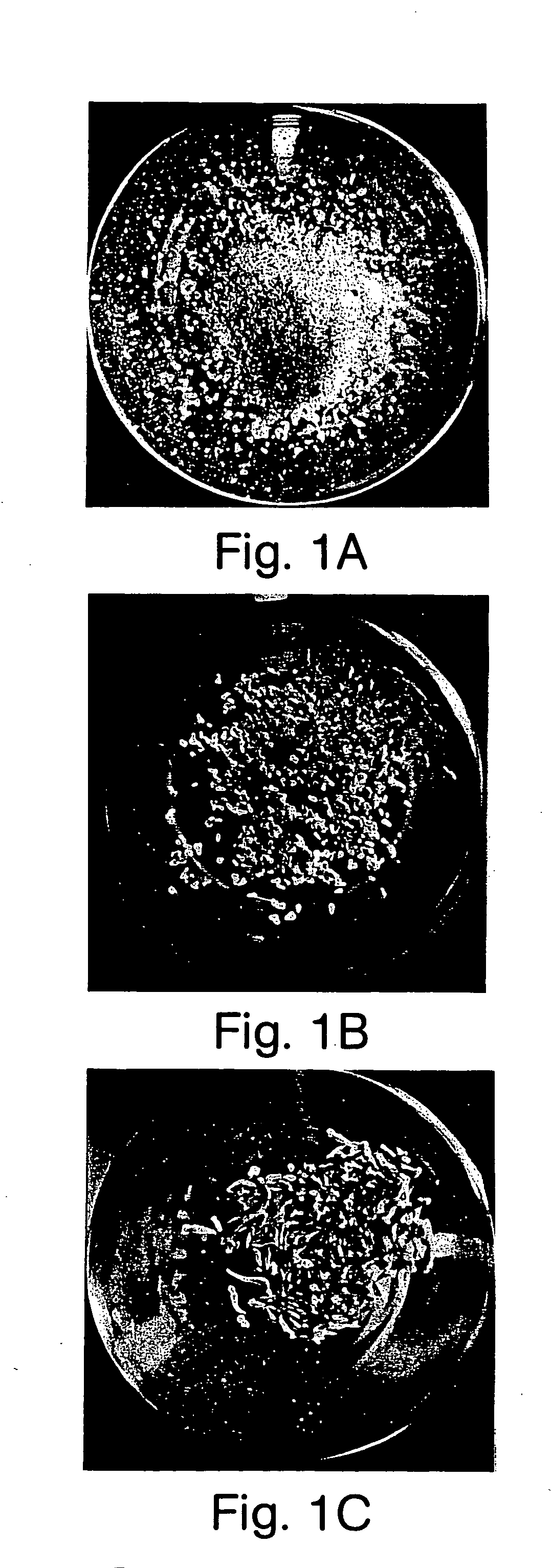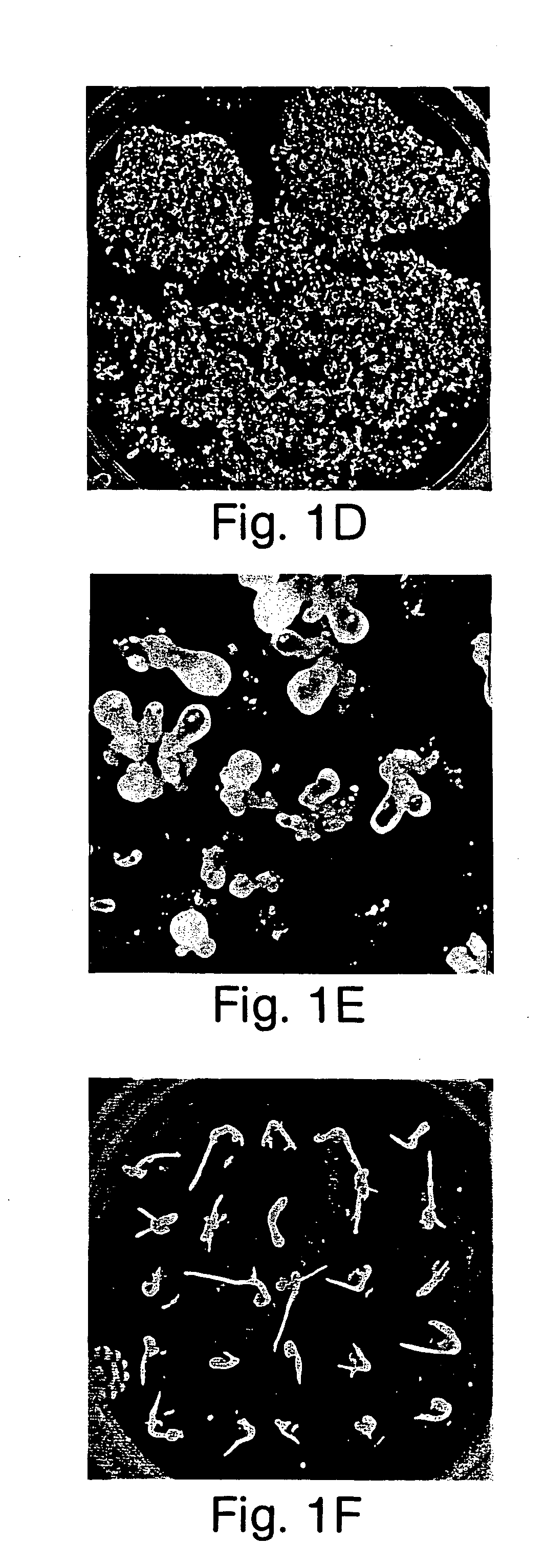Regeneration system for grape and uses thereof
a technology for regenerating systems and grapes, applied in the field of regenerating grape plants and grape germplasm, can solve the problems of limited genetic improvement of grapes through conventional breeding, high labor intensity, and inability to generally breed true, and achieve the effect of facilitating an extraordinarily high frequency of somatic embryo formation and enhancing embryogenic culture initiation frequency
- Summary
- Abstract
- Description
- Claims
- Application Information
AI Technical Summary
Benefits of technology
Problems solved by technology
Method used
Image
Examples
Embodiment Construction
[0034] We have developed a method for growing perennial grape embryogenic cultures that is useful for the regeneration of grapes. The unique germplasm resulting from our culture system has been observed to produce grape plants with an enhanced ability to recreate embryogenic cultures. Furthermore, we have developed a process for growing large quantities of somatic grape embryos from such perennial embryogenic cultures in a relatively short period using a liquid suspension culture.
[0035] Terms used herein are defined as follows:
[0036] By “perennial grape embryogenic culture” is meant an embryogenic culture in which embryogenic cells or cell masses have been repeatedly selected, subcultured, and maintained as an in vitro culture. Such perennial grape embryogenic cultures are maintained for at least half a year, preferably three years, and most preferably four or more years.
[0037] By “embryogenic cell,”“embryogenic cell mass,” or “embryogenic cultures” is meant a cell or collection ...
PUM
| Property | Measurement | Unit |
|---|---|---|
| temperature | aaaaa | aaaaa |
| concentration | aaaaa | aaaaa |
| concentration | aaaaa | aaaaa |
Abstract
Description
Claims
Application Information
 Login to View More
Login to View More - R&D
- Intellectual Property
- Life Sciences
- Materials
- Tech Scout
- Unparalleled Data Quality
- Higher Quality Content
- 60% Fewer Hallucinations
Browse by: Latest US Patents, China's latest patents, Technical Efficacy Thesaurus, Application Domain, Technology Topic, Popular Technical Reports.
© 2025 PatSnap. All rights reserved.Legal|Privacy policy|Modern Slavery Act Transparency Statement|Sitemap|About US| Contact US: help@patsnap.com


